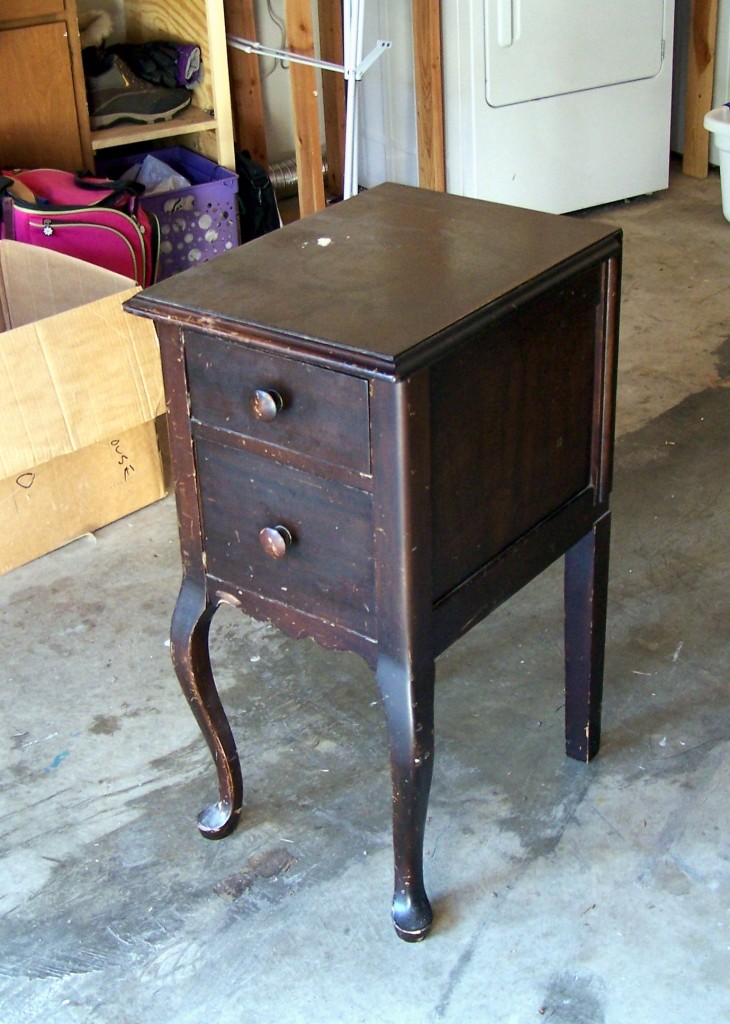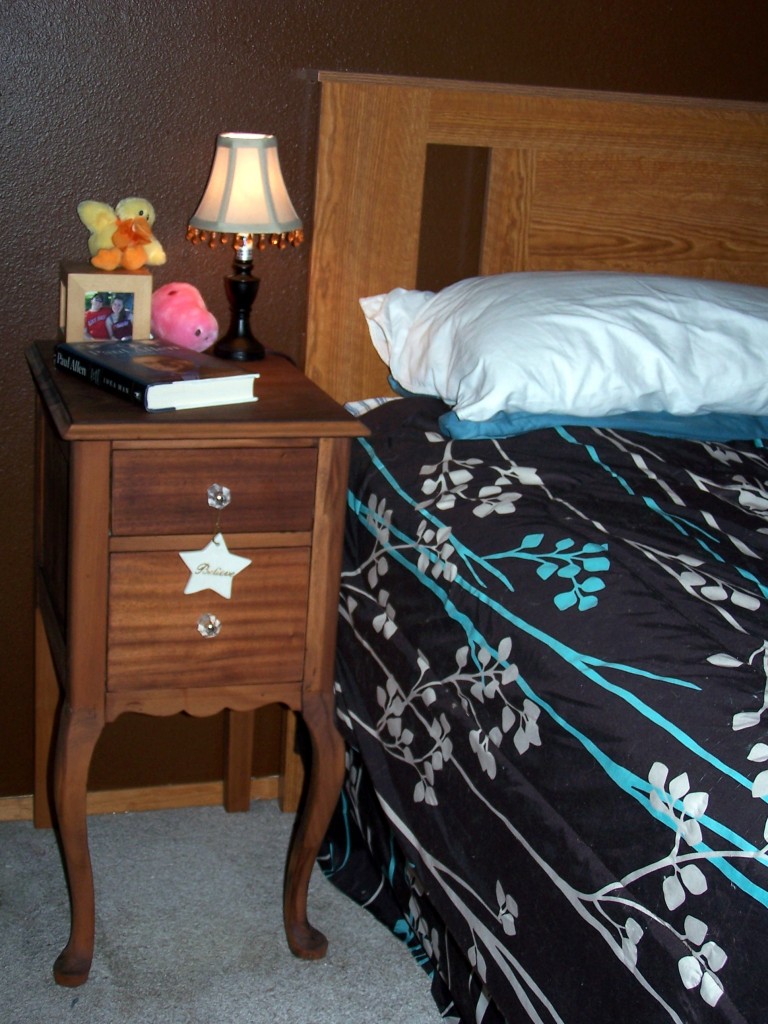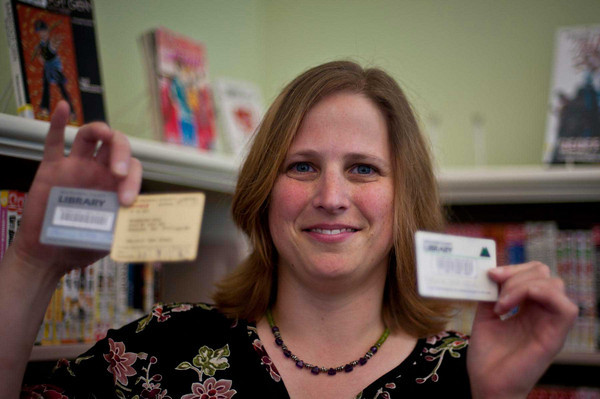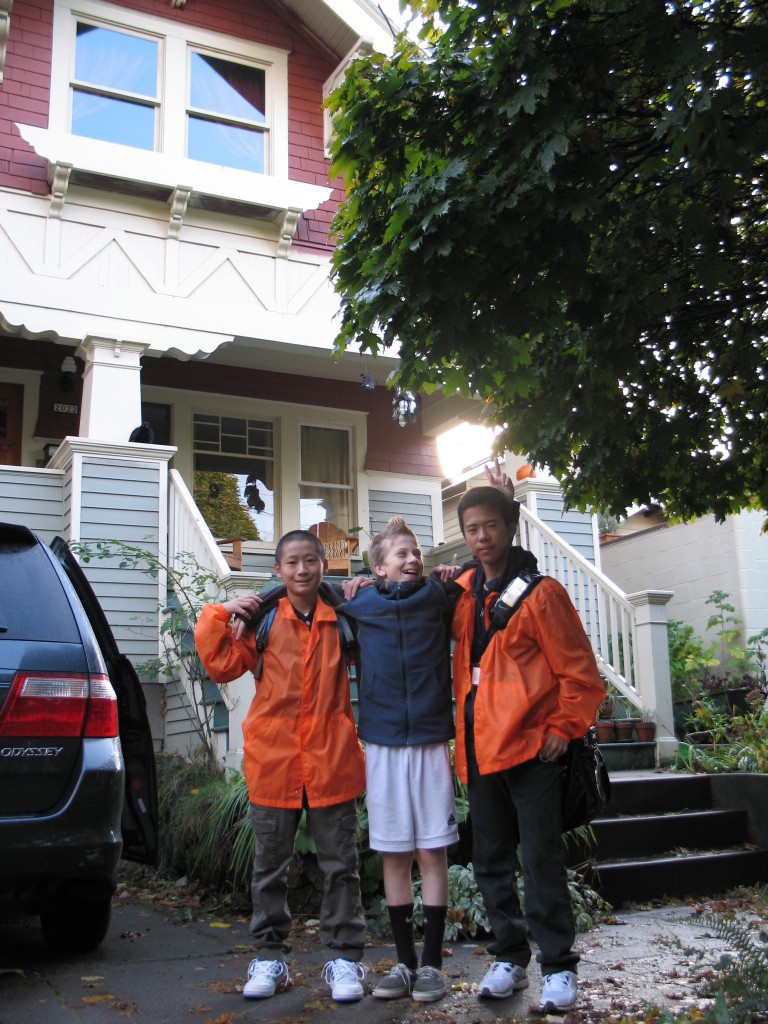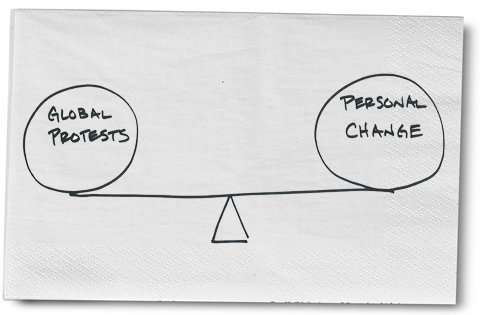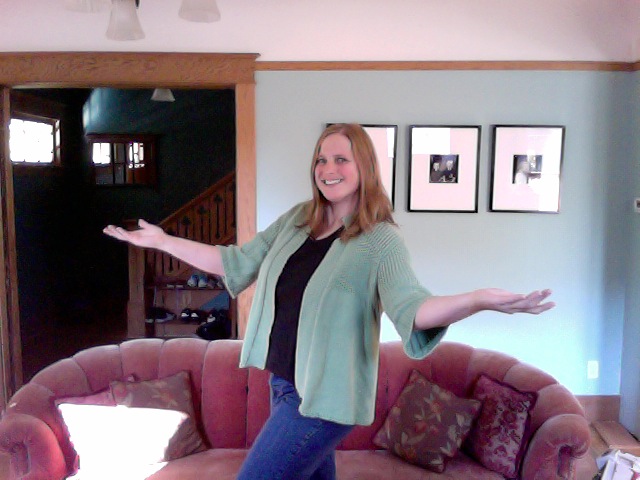
For The Frugal Girl, who wanted a photo of the sweater.
Because I do all my shopping at area thrift stores, I have a unique view into the clothing brands that Portlanders buy. (Or at least the brands that Portlanders are donating.) And for the most part, it’s a sadly narrow selection. I stand there flipping through the racks muttering to myself, “Target, Target, Old Navy, Gap, Dress Barn, Target, Gap, Target, Old Navy, H & M.” So when I see a brand I’ve never heard of before, I’ll give that garment some extra attention.
Hmm . . . was this sweater/T-shirt/blazer possibly not mass produced?
Earlier this week I was on the hunt for The Perfect Cardigan, (it goes hand in hand with the Less Heat Challenge) and my attention was grabbed by a lovely green sweater with empire waist detailing and 3/4-length sleeves. The brand, Laurie B was something I’d never heard of, and miracle of all miracles it actually fit. And dare I say it — actually looked good on me?! So after going through my internal tirade about how Goodwill charges too much money for their clothing, (What, $7.99 for a used sweater that they got for free?!) I took the sweater to the register and paid.
After after a day or two of bonding with the sweater, I finally took the time to do a web search for the brand, and discovered that Laurie B Knitwear is sold at fine retailers such as Bloomingdale’s from $145 – $200. (So I guess I should stop feeling bad about paying $7.99.) Cool.
I started thinking about how what initially drew me to this sweater was the simple fact that it wasn’t from Gap or Target. I remember a friend-of-the-family high school teacher talking about how the students at his school all looked the same because they all shopped at the same mall. This stuck in my teenage brain, because A: I was a hopeless snob and his high school was in the *gag* suburbs; and B: Because it had never occurred to me how everyone shopping at the same stores would result in a homogenous aesthetic.
My sister just moved back to New York City after five years of being away, and one change struck her, which was how Big Box Stores had invaded Manhattan in her absence. These category killers cropped up while my sister was innocently following her master-degree-getting husband around the country. Sure, the Macy’s at Herald Square is the original Big Box Store, selling everything from kitchenware to clothing to confirmation of the existence of Santa Clause, but for the most part, Manhattan has always been a place for small to medium-sized shops. And with Target, Staples, Bed Bath and Beyond and Ikea now dominating the market, the aesthetic homogenization had firmly hit Manhattan.
Why should there be any difference between the mall in Dubuque, Iowa and midtown Manhattan?
But a more important issue, is that a significant number of these mass produced garments are manufactured in dangerous overseas factories where working conditions run the gamut from sweatshops to actual firetraps. It wasn’t even a year ago, when news of a garment factory fire in Bangladesh resulted in 100+ deaths as locked-in workers jumped from the windows of their factory workplace. And who did this factory produce for? “Gap, JCPenney, H & M and Wal Mart.”
I know that when I buy used, I am not supporting the consumer culture of cheap-at-any-cost fashion, and I would still rather buy from small, hopefully ethical manufacturers. Even when I’m shopping at thrift shops.
Do you jump at the great prices from Big Box Retailers or do you try and shy away from them? Please share your thoughts in the comments section below.
Katy Wolk-Stanley
“Use it up, wear it out, make it do or do without”
Click HERE to follow The Non-Consumer Advocate on Twitter.
Click HERE to join The Non-Consumer Advocate Facebook group.
Like this post? Then please share it with your friends!
Like this:
Like Loading...
